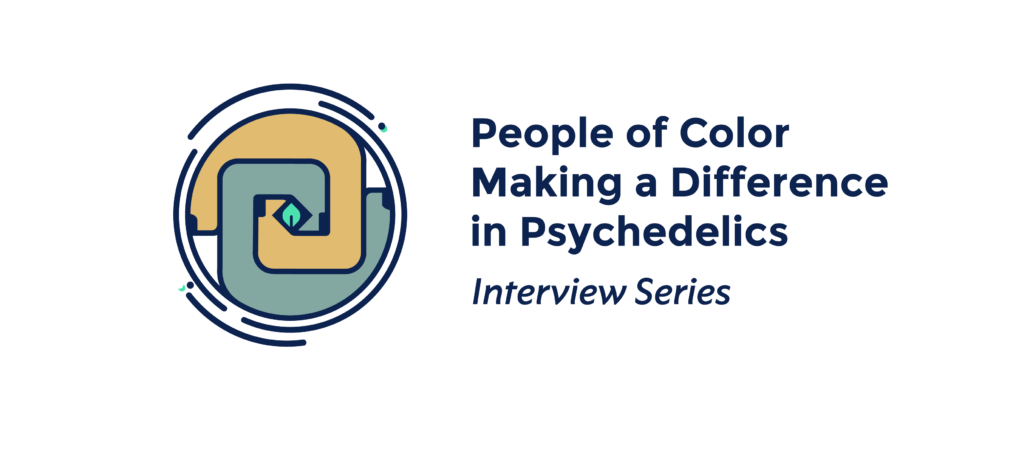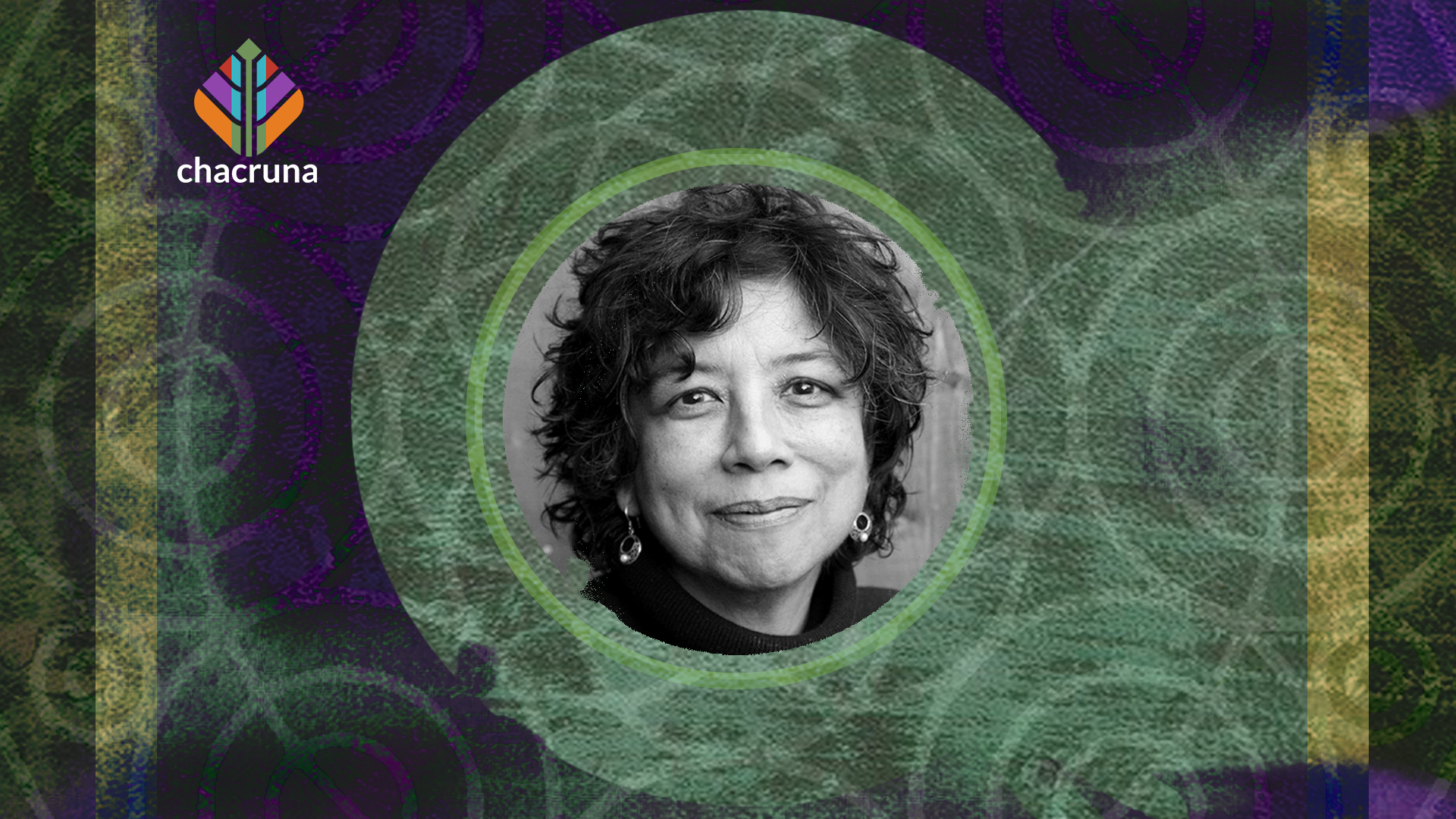- Entheogens, the African Diaspora, and BIPOC communities with Kufikiri Imara - January 20, 2021
- Innovating Native American Health Care Using Culture and Technology With Sutton King - January 11, 2021
- Navigating the Personal and Political in MDMA-assisted Psychotherapy with Sara Reed - December 29, 2020

A near-death experience as a child set Licia Sky on the path to becoming a healer. This life-changing vision became a guide on how to listen with a heightened sense of awareness, which growing up in a multiracial family with trauma lineages, was “a means of survival,” Sky told us. Talking about her work, she said, “I’m really guiding people to listen in the way that I learned from that experience… I call it ‘slow-motion psychedelic.’”
As a somatic educator, bodyworker, artist, and musician, Licia Sky, BFA, LMT, has 25 years of experience using the body as a vehicle for greater awareness, creative freedom, connection, and healing. She was invited by MAPS to participate in the MDMA-training program for people of color and works with traumatized individuals and trains mental health professionals to use mindful meditation in movement, theater exercises, writing, and voice as tools for attunement, healing, and connection.
In light of the crises that face us, Licia Sky’s guidance on how to listen actively encourages us to work from within and rebuild a healthy relationship with ourselves. We talk to Sky about mindful listening, body awareness, near-death experiences, and psychedelics for the purposes of healing.
As a debut piece, this opening conversation with Licia Sky sets the tone for an interview series that highlights the lives and work of people of color in the psychedelic field.
As a debut piece, this opening conversation with Licia Sky sets the tone for an interview series that highlights the lives and work of people of color in the psychedelic field. If it is about adding more voices to the psychedelic conversation, “it needs to be more than just listening to the voices that are already a part of that conversation,” in the words of Kufikiri Hiari Imara from Decrim Nature Oakland (DNO).
“We need to be listening for the voices that aren’t there; asking ourselves why they aren’t. What we can do to bring them in? Not in the sense of “now that you’re here,” but rather: you’re welcome, wanted, required to move things forward.”
Maria Mocerino: As a somatic educator, bodyworker, artist, and musician, you work with the voice and body as a means of helping people heal from trauma. How did you get into this work?
Licia Sky: (laughter) How far back do you want to go?
MM: As far back as you remember?
I come from a line of people that have survived incredible traumas on both sides of my family.
LS: I come from a line of people that have survived incredible traumas on both sides of my family.
My father’s Black. He was a Tuskegee airman. His grandparents were sharecroppers from Mississippi and Alabama, and his parents were a part of the great migration north. He was born in Chicago, and his upbringing was extremely trauma-filled. It was a common, shared experience for anyone that grew up in his neighborhood.
My mom is from Japan. Her family survived the firebombing of Tokyo when she was a young child. She was sent to the mountains to survive the rest of the war with her grandmother and had a difficult time reuniting with her family after the war. In spite of that, she was really bright, had two years of college, but her parents were arranging a marriage with her with a much older man. Two years were more than enough for anyone who was going to get married, and she was considered an old maid at 23, so this was a priority. She met my dad, who promised to put her through college on his G.I. bill, and she ran off with him.
These were the pre-facts of my life. I think they matter so much more than we really take into account. It’s the context of our lives: how you begin to navigate, what you are attracted to, what you run away from, what hurts you, what saves you, what loves you, and what you learn to love. It’s a glorious thing. Everyone has their own myths that they’re living; the lucky ones!
Hopefully, we take the opportunities at hand. We meet them, weave our care, thoughts, love, and meaning-making into the things we pursue.
MM: What does that mean for people who have experienced trauma?
If you’ve been really harmed, it means being able to approach or re-approach life from a place of possibility, wonder, creativity, curiosity, and opportunity.
There are people who have been so hurt that these positive capacities get shut down. They have to understand what has been too painful for them to look at, and how their body holds their pain and protects them from the things that they are afraid of. That way, someone can learn how to re-friend their body; get to know it again.
MM: You talk about the concept of “attunement” in your work. How is listening to one’s body a tool in navigating through life?
LS: Listening to my body is how I listen to the world. For example, I hear your voice and what sounds like an emotion. Something resonates in me, and then I’m curious. I want to say, “Is this what you’re feeling? Am I connecting with you?” It’s the conversation that I have with people when I’m working one-on-one. In a group, it’s a conversation that I’m guiding people to have with themselves and each other.
What I intend when I work with people is to guide them to a place where they are listening carefully to themselves all the time.
It’s a very different kind of listening than, let’s say, listening to words or music passively. It’s active. You’re listening to a sensation and your physical, emotional, and sensational responses to your environment and to your insides: your heart, your thoughts, and your memories. What I intend when I work with people is to guide them to a place where they are listening carefully to themselves all the time.
MM: So, attunement is about developing attention?
LS: It’s a way of developing expanded attention. There are different layers of attention that we can have at the same time. When we’re in a day-to-day flow, there are probably a lot of feelings that we habitually tune out.
MM: Why would those feelings be useful to tune into?
LS: There are a lot of feelings that we have that we don’t pay attention to. A lot of feelings that tell us how safe we feel or how in danger we feel. It would be helpful for us if we regain the capacity to notice.
MM: Why?
LS: Oftentimes, those feelings refer to experiences in our past that we’re not directly aware of. The sensations that we have in the present moment bring us back to those feelings so we can resolve those instances in the past and bring those parts of ourselves forward in time to a higher functioning place.
MM: How do you see psychedelics as tools? Do you use them?
when I was twelve, I had a near-death experience.
LS: Even beyond using medicine to have a psychedelic experience, when I was twelve, I had a near-death experience. I was in a tunnel of colors and emerged into a vast place of light that I would liken to being in the center of the galaxy where all the stars are being born, filled with pulsing lights; colorful, refracted lights. An entire sky filled with suns, that’s what it was like.
It was a place of such incredible love.
It was a place of such incredible love. There was no part of me that wasn’t completely accepted. I wanted to stay there, but I was told that I had work to do and I had to go back. I was given a life preview, and I’ve lived pretty much everything that I saw. That vision has been a talisman for me. I’ve always used it as a guide.
In my work that I do now, I’m really guiding people to listen in the way that I learned from that experience. When you slow down your attention and really see, hear, feel what’s around you vividly, I think you can reach a place of crystalline acuity. I call it “slow-motion psychedelic” because it’s without drugs, it’s without breathing exercises.
MM: What is “slow-motion psychedelic?”
With our imagination and our memory, we have the capacity to travel in time. And when we travel in time, we have the capacity to repair things that have happened in our past.
It’s just sitting and slowly noticing not just what you think is concretely around you but having the permission to imagine. With our imagination and our memory, we have the capacity to travel in time. And when we travel in time, we have the capacity to repair things that have happened in our past. I believe our consciousness holds multiple dimensions and that we can hold the past and present at the same time. We can probably hold the future too and to me, that’s psychedelic!
MM: What do psychedelics do, then?
They allow us to see, feel, smell, taste, and hear things differently. I feel like I’ve brought that capacity back with me from my psychedelic experiences. And I think people who treat them as a recreational thing are missing the boat because then you’re acting like a consumer, and I don’t think these should be disposable experiences.
Many older people that I know who were a part of the 60s drug culture said that their lives and creative capacities were greatly enhanced by their psychedelic experiences. I wish that people who have those journeys are able to bring back the “creative disinhibition.” Meaning, they are more open to something that they would have shut out before.
Art by Mariom Luna.
Take a minute to browse our stock:
Did you enjoy reading this article?
Please support Chacruna's work by donating to us. We are an independent organization and we offer free education and advocacy for psychedelic plant medicines. We are a team of dedicated volunteers!
Can you help Chacruna advance cultural understanding around these substances?











